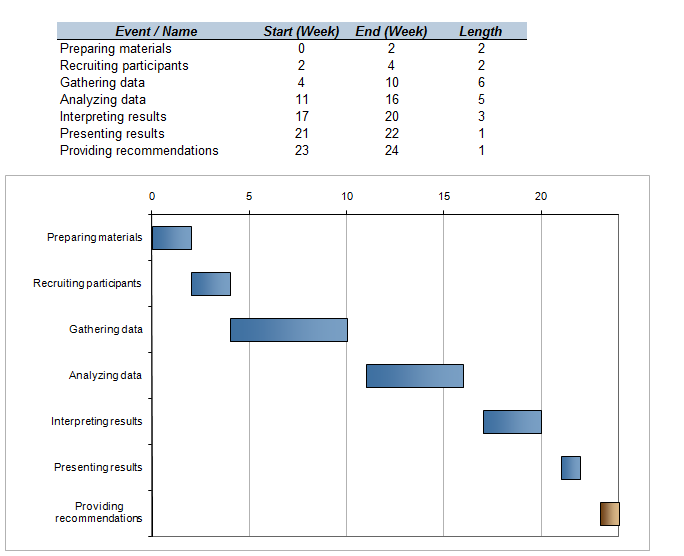Introduction
Focusing on improving healthcare service quality for a diverse population is a crucial element of the modern healthcare. Indeed, with the shift of the focus to the patient-centered approaches and the propensity for an increase in diversity levels in communities, there is a necessity to identify the specifics of every single group, and LGBT is one of them. However, because of numerous prejudices and the lack of information about the identified population, the quality of services and speed of their delivery may suffer.
The purpose of this paper is to present a proposal for an evidence-based practice (EBP) project about the current levels of LGBT healthcare disparity and poor information management when it comes to addressing the needs of LGBT communities, as well as suggest the tools for managing the problem.
Background
Pinning down how long the problem of meeting LGBT members’ healthcare needs has been around is rather problematic because of the social controversy around the subject matter. According to the 2014 WHO report, 1.6% of the world population identify themselves as homosexual, and 0.7% of the respondents define themselves as bisexual (Ward, Dahlhamer, Galinsky, & Joestl, 2014). The small size of the target group, as well as the tendency to remain secretive about their orientation due to the social stigma, makes the job of healthcare organizations as far as the provision of the relevant services very difficult (Fredriksen-Goldsen, Hoy-Ellis, Goldsen, Emlet, & Hooyman, 2014).
Furthermore, studies show that social prejudices affect the choices made by healthcare experts on a number of occasions (Ward, et al., 2014). As a result, the lack of knowledge about the needs of the LGBT community and, thus, the inability to come up with the strategies that will allow meeting these needs efficiently, affects the quality of healthcare and the success of managing LGBT people’s health issues, triggering substance abuse, depression and suicide, increase in high school/college dropout rates among young LGBT people, etc. (Arora, Kelly, & Goldstein, 2016). A few strategies such as the development of awareness programs have been suggested, yet with little success (Fredriksen-Goldsen et al., 2014).
Clinical Significance
The clinical significance of the topic is rather high since it is crucial to promote equal healthcare opportunities for all members of the population. Therefore, once at least one social group’s needs are ignored, providing homogenously high-quality care becomes impossible. Exploring the current levels of awareness among healthcare experts regarding the needs of LGBT people, one will be able to determine the strategies for increasing the awareness levels and making the communication process between healthcare service members and the representatives of the LGBT community more efficient.
Purpose
The purpose of the study is to determine the effects that the lack of knowledge about the needs of the LBGT community has on the quality of care for the identified members of the population, as well as the strategies that can be used to build awareness and improve the quality of healthcare services offered to the LGBT representatives. The study seeks to answer the following question: “How does the use of modern media and promotion of diversity (I) help improve the quality of care (O) provided to the members of the LGBT community (P) within two years (T) compared to current awareness-related strategies (C)?”
PICOT
- Population: Healthcare service members;
- Intervention: Modern media as the tool for raising awareness;
- Comparison: Traditional data collection methods;
- Outcome: Improvement in the quality of care, communication, and patient outcomes;
- Time: two years.
Literature Review
Despite the significant progress made over the past few decades, the rights of LGBT representatives are still systematically marginalized (Fredriksen-Goldsen et al., 2014). The said phenomenon has a direct effect on the quality of care, preventing healthcare experts from acquiring the relevant knowledge and skills for catering to the needs of the target population (Arora et al., 2016). Approaches toward LGBT-competent care have been designed, yet the quality of services still leaves much to be desired (Ward et al., 2014). Therefore, there is a need to introduce innovative approaches for enhancing the communication process between healthcare experts and LGBT representatives.
Theoretical Framework
The problem will be approached from the perspective of the Theory of Integral Nursing (Smith & Parker, 2015). Allowing one to view the essential processes as a part of the awareness-raising process, it will shed light on how knowledge can be acquired successfully.
Methods
Research Design
The quantitative approach will be used as the research design. Seeing that a comparison will be made between two strategies, there is a need to quantify the data.
Sample
The sample will make 120 participants. Thus, a detailed analysis can be carried out.
Setting
The study will be conducted in the setting of a local healthcare facility. A case study can be carried out in the context of a local institution.
Research Protocol
Data Analysis
The retrieved information will be analyzed with the help of Student’s t-test. The identified tool will help isolate the deviation from the norm for each of the key variables (i.e., the interventions used to encourage knowledge acquisition and data management). Consequently, the superior framework will be determined.
Timeline

References
Arora, P., Kelly, J., & Goldstein, T. R. (2016). Current and future school psychologists’ preparedness to work with LGBT students: Role of education and gay-straight alliances. Psychology in the Schools, 53(7), 722-835. Web.
Fredriksen-Goldsen, K. I., Hoy-Ellis, C. P., Goldsen, J., Emlet, C. A., & Hooyman, N. R. (2014). Creating a vision for the future: key competencies and strategies for culturally competent practice with lesbian, gay, bisexual, and transgender (LGBT) older adults in the health and human services. Journal of Gerontological Social Work, 57(10), 80-107. Web.
Smith, M. C., & Parker, M. E. (2015). Nursing theories and nursing practice. New York, NY: F.A. Davis.
Ward, B. W., Dahlhamer, J. M., Galinsky, A. M., & Joestl, S. S. (2014). Sexual orientation and health among U.S. adults: National health interview survey, 2013. CDC: National Health Statistics Reports, 77(1), 1-11.